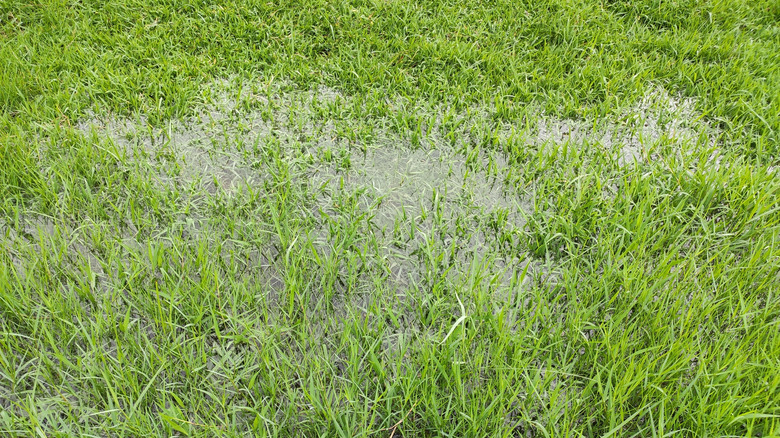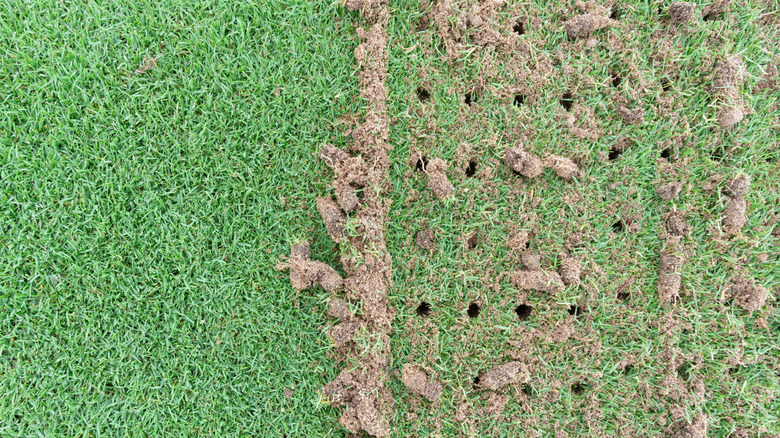The Simplest Solution For A Waterlogged Lawn After Heavy Rainfall
The only thing worse than a long, dreary storm is all the water left behind on your lawn after it's over. Not only does it make your yard a bit treacherous, but it's also dangerous for the grass: if it sits underwater for more than four days, the damage may be irreparable. The first thing you should do to prevent water accumulation? Aerate that lawn.
It's normal for some water to collect after heavy rainfall or floods, but waterlogging is a sign of another underlying issue, especially if it happens every time it rains heavily. Inadequate drainage can happen for a few reasons. For example, the soil may be high in clay, which retains water, or there may be a buildup of thatch. Often, the soil is too compacted due to frequent foot or vehicular traffic. If your lawn is overdue for aeration, that can also lead to waterlogging — and aeration happens to be the simplest way to help the yard dry out more quickly, break up silt, and prevent future issues.
It's best to stay vigilant if there's standing water on your lawn, especially since you could lose the turf within a few days. Not only is your grass being deprived of oxygen and sunlight while flooded, but all that water also encourages weeds, moss, and fungal diseases. At the same time, you can't aerate the lawn immediately without potentially damaging it further.
How to aerate a waterlogged lawn
Since waterlogging is so hard on your lawn, it's best to avoid walking on it until it's dry, which means no aerating just yet. To speed up the process, sweep the standing water away, use a siphon pump or shovel, or make furrows in the ground. If there's too much flooding to handle on your own, keep in mind that it can take a few weeks for the grass to dry fully, and it may not survive.
Once there's no more standing water, an aerator will help dry out the surface further. Use a hollow tine or core aerator, which forms plugs that are extracted from the lawn, allowing water and oxygen to move through the soil more easily. For smaller lawns, a manual aerator can work; larger yards will require a push-behind or powered aerator. The process also breaks up any silt or sand deposits left behind from flooding; these will need to be removed or tilled into the soil afterward.
After aerating, mow the grass on the highest setting and fertilize your lawn to aid recovery. But if more than 60% of the lawn has died, you will likely need to start from scratch and reseed your lawn. Either way, aerating your lawn consistently in the future (at least once a year) is essential to prevent more waterlogging. If your soil is high in clay, amending with organic matter is also helpful, and in some extreme cases, only a properly installed drainage system will do the trick. Alternatively, you can lean into having flood-prone spots in your yard and plant a rain garden.

